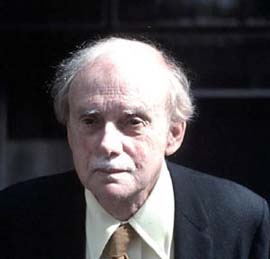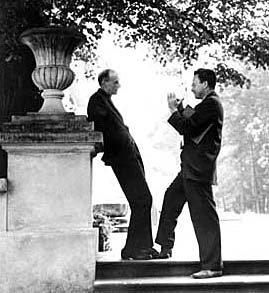Chaucer, Dirac, and Feynman
-
Geoffrey Chaucer is known as the author of the Canterbury Tales. He
wrote his book in 1387 AD. Chaucer was an English diplomat who
travelled to France and Italy which were more advanced countries at
that time. Before joining the government, he studied physics,
chemistry, and biology. If he was a physics, what physics did he do?
I cannot claim any expertise in English literature, especially on the literature before Shakespeare. However, I was able to enjoy one of the cinema versions of the Canterbury Tales. There one of the stories goes like this.
A shop keeper lives with his wife and a daughter. They sleep in a room with three double beds. The couple in one bed, and the daughter alone on the second bed with one empty spot. Then there come two male visitors who want to sleep in the shop keeper's house. They are invited to sleep on the third bed. During the night, one of the guests goes to bath room, but does not go back to his original bed, but to the empty spot on the daughter's bed. Sometime after, the shop keeper's wife goes to bath room and goes to the empty spot on the visitors' bed. I forgot what happened next, but the story goes on, and everybody is in his/her original position by the morning as if nothing had happened. In this particular tale, Chaucer was introducing the concept of permutation.

|
| Photo by Bulent Atalay |
After seeing this movie in 1979, I was eager to see Paul A. M. Dirac to ask him whether he was inspired by Chaucer's Canterbury Tales when he was writing Section 55 of his book entitled "Principles of Quantum Mechanics" (very important book in physics). Dirac treats there permutations as dynamical operations with eigenvalues.
I was fortunate enough to talk with Dirac in 1962 and 1978 (before seeing the above-mentioned movie). In 1962, Dirac led me to the light-cone coordinate system. In 1978, I had questions about how to combine quantum mechanics and special relativity. Unfortunately, Dirac left us in 1984, and I was not able to talk with Dirac about Chaucer. However, I was invited to the memorial service held at Florida State University, and I attended. I thoroughly missed him, because I also wanted to talk about the following aspect of Richard Feynman.

|
| from Caltech Photo Archives |
It is not clear whether Feynman read this particular section of Dirac's book, but his mathematics was somewhat incomplete. With Paul Hussar and Marilyn Noz, I wrote a short note telling how the mathematics can be completed and submitted to the Physical Review D, but the paper was rejected. We then wrote a lengthy paper explaining what Feynman did starting from Dira'c Section 55. This paper was published in the American Journal of Physics.
Both Dirac and Feynman were exceptionally creative physicists. They could formulate physical ideas from the phenomena to which ordinary people do not pay attention. As for the issue of whether Feynman studied Dirac's book, I can tell the following story.

|
| with Michel Baranger (1996) |
The instructor was Michel Baranger who received his PhD degree from Cornell. Baranger had two advisors there. One was Hans Bethe, and the other was Richard Feynman. It was possible for Feynman and Baranger to have talked about Sec. 55 of Dirac's book.
Michel Baranger was kind enough to invite me and my wife to his retirement party held at MIT in 1997. We shared the dinner table with Francis Low and Victor Weisskopf. I had a photo with Baranger.
I have another story about Baranger. If you are interested, you may click here.
Y.S.Kim (10 February 2004)